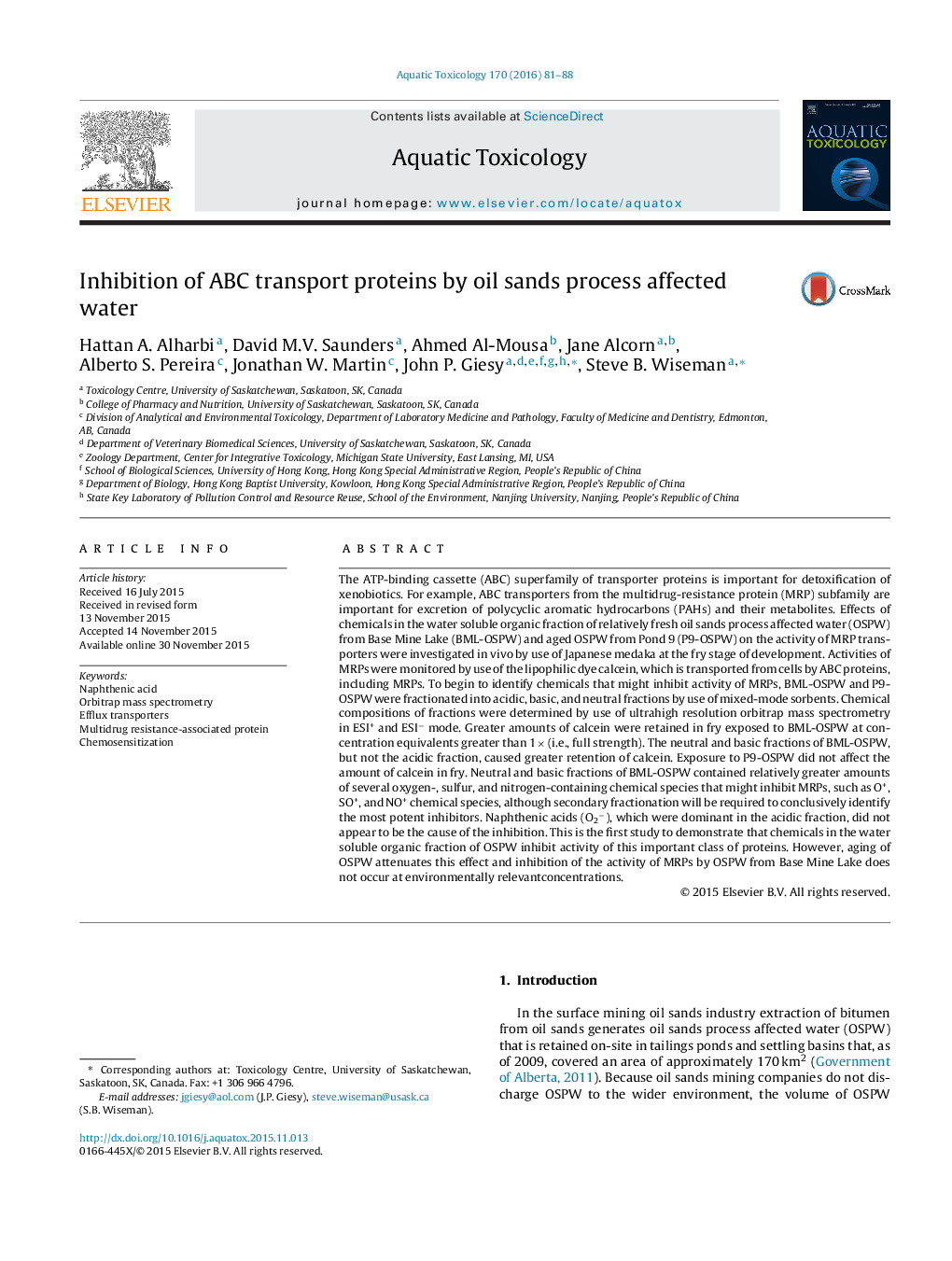| کد مقاله | کد نشریه | سال انتشار | مقاله انگلیسی | نسخه تمام متن |
|---|---|---|---|---|
| 4528969 | 1625935 | 2016 | 8 صفحه PDF | دانلود رایگان |

• Effects of OSPW on activities of MRP transporters was investigated.
• Chemicals in fresh, but not aged OSPW inhibited activity of MRPs.
• O+, SO+, and NO+ species, but not naphthenic acids (O2−) inhibit MRPs.
The ATP-binding cassette (ABC) superfamily of transporter proteins is important for detoxification of xenobiotics. For example, ABC transporters from the multidrug-resistance protein (MRP) subfamily are important for excretion of polycyclic aromatic hydrocarbons (PAHs) and their metabolites. Effects of chemicals in the water soluble organic fraction of relatively fresh oil sands process affected water (OSPW) from Base Mine Lake (BML-OSPW) and aged OSPW from Pond 9 (P9-OSPW) on the activity of MRP transporters were investigated in vivo by use of Japanese medaka at the fry stage of development. Activities of MRPs were monitored by use of the lipophilic dye calcein, which is transported from cells by ABC proteins, including MRPs. To begin to identify chemicals that might inhibit activity of MRPs, BML-OSPW and P9-OSPW were fractionated into acidic, basic, and neutral fractions by use of mixed-mode sorbents. Chemical compositions of fractions were determined by use of ultrahigh resolution orbitrap mass spectrometry in ESI+ and ESI− mode. Greater amounts of calcein were retained in fry exposed to BML-OSPW at concentration equivalents greater than 1× (i.e., full strength). The neutral and basic fractions of BML-OSPW, but not the acidic fraction, caused greater retention of calcein. Exposure to P9-OSPW did not affect the amount of calcein in fry. Neutral and basic fractions of BML-OSPW contained relatively greater amounts of several oxygen-, sulfur, and nitrogen-containing chemical species that might inhibit MRPs, such as O+, SO+, and NO+ chemical species, although secondary fractionation will be required to conclusively identify the most potent inhibitors. Naphthenic acids (O2−), which were dominant in the acidic fraction, did not appear to be the cause of the inhibition. This is the first study to demonstrate that chemicals in the water soluble organic fraction of OSPW inhibit activity of this important class of proteins. However, aging of OSPW attenuates this effect and inhibition of the activity of MRPs by OSPW from Base Mine Lake does not occur at environmentally relevantconcentrations.
Journal: Aquatic Toxicology - Volume 170, January 2016, Pages 81–88